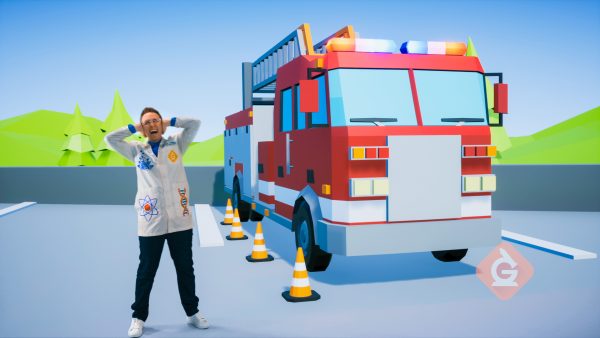Signal Definition
A signal sends messages through light or sound over distances. For example, Morse code uses flashing lights for communication.
View Lesson on Communication Over Distances
Become a member to get full access to our entire library of learning videos, reading material, quiz games, simple DIY activities & more.
Become a member to get full access to our entire library of learning videos, quiz games, & more.
Plans & Pricingto watch this full video.

Access All Videos
and Lessons, No Limits.
Access All Videos

No credit card required,
takes 7 sec to signup.
No card required

Ready-to-go lessons
that save you time.
Ready-to-go lessons
If you are on a school computer or network, ask your tech person to whitelist these URLs:
*.wistia.com, fast.wistia.com, fast.wistia.net, embedwistia-a.akamaihd.net
Sometimes a simple refresh solves this issue. If you need further help, contact us.
Communication Over Distances
Fun Facts
- Traffic lights use colors to signal actions to drivers.
- Morse code communicates letters via short and long signals of light.
- Sirens on police cars signal an emergency with loud sound.
Why Do We Need To Know About Signal
Learning about signals helps us know how important messages get sent. Being able to communicate well is key in many areas. Signals can be things we see or hear. Signals help keep us safe, help us find our way, and let us talk to each other every day and in lots of jobs.
Think about how an ambulance’s flashing lights tell us there’s an emergency, or how Morse code can send important messages. Knowing about signals can prepare you for jobs in emergency services, transportation, and working on ships. This knowledge is useful for a bunch of different careers.
Frequently Asked Questions
Check out the Full Lesson on Communication Over Distances
In this lesson, we learn that:
- To communicate over distances we can use light.
- We can also use sound to communicate.
- We receive messages through light and sound every day.
Related Topics
- Adaptation Definition
- Biotechnology Definition
- Chemical Reaction Definition
- Chloroplast Definition
- Chloroplasts Definition
- Classify Definition
- Climate Definition
- Compound Definition
- Conservation Biologist Definition
- Convection Definition
- Definition Of Non-living Things
- Earth’s Orbit Definition
- Electric Charge Definition
- Electromagnet Definition
- Energy Definition
- Engineering Definition
- Engineering Design Process Definition
- Food Web Definition
- Force Definition
- Fossil Definition
- Fossil Record Definition
- Insulator Definition
- Light Year Definition
- Limited Resource Definition
- Liquid Definition
- Lunar Eclipse Definition
- Magnetism Definition
- Mass Definition
- Molecule Definition
- Mutation Definition
- Mutualism Definition
- Natural Resource Definition
- Organ Definition
- Pollinator Definition
- Properties Of Matter Definition
- Property Definition
- Pulley Definition
- Push Definition
- Scientist Definition
- Signal Definition
- Solar System Definition
- Sunlight Definition
- Tides Definition
- Tsunami Definition
- Volts Definition
- Water Definition
- Wavelength Definition
- Wedge Definition
Start a Free Trial Today. Get a $5 Amazon Gift Card!
Teachers! Start a free trial & we'll send your gift card within 1 day. Only cards left. Try it now.
Select Grade
Select Subject
This email is associated with a Science Kit subscription. Kit subscriptions are managed on this separate page: Manage Subscription

-
Download InvoiceScience & Math$/yr
-
Download InvoiceScience Only$/yr

access all lessons
• No credit card required •
"My students loved the videos. I started the video subscription in May and used them as a review before the state test, which I know contributed to 100% of my class passing the state test."
Rhonda Fox 4th Grade Teacher, Ocala, Florida
Use Generation Genius in Your School
Access all lessons free for 30 days.
"My students loved the videos. I started the video subscription in May and used them as a review before the state test, which I know contributed to 100% of my class passing the state test."
Rhonda Fox 4th Grade Teacher, Ocala, Florida
• No credit card required •
Already a member? Sign In
* no credit card required *

* no credit card required *
* no credit card required *


to Discover the Benefits of Generation Genius
Learn How to Save for Your School & District!

no credit card required
Skip, I will use a 3 day free trial
Enjoy your free 30 days trial
-
Unlimited access to our full library
of videos & lessons for grades K-5. -
You won’t be billed unless you keep your
account open past your 14-day free trial. -
You can cancel anytime in 1 click on the
manage account page or by emailing us.
-
Unlimited access to our full library of videos & lessons for grades K-5.
-
You won't be billed unless you keep your account open past 14 days.
-
You can cancel anytime in 1-click on the manage account page.
Cancel anytime in 1-click on the manage account page before the trial ends and you won't be charged.
Otherwise you will pay just $10 CAD/month for the service as long as your account is open.
Cancel anytime on the manage account page in 1-click and you won't be charged.
Otherwise you will pay $10 CAD/month for the service as long as your account is open.
We just sent you a confirmation email. Enjoy!
DoneWe use cookies to make your experience with this site better. By using this site you agree to our use of cookies. Click "Decline" to delete and block any non-essential cookies for this site on this specific property, device, and browser. Please read our privacy policy for more information on the cookies we use.Learn More
We use cookies to improve your experience. By using this site, you agree to our use of cookies. Click "Decline" to block non-essential cookies. See our privacy policy for details.Learn More




























































































































